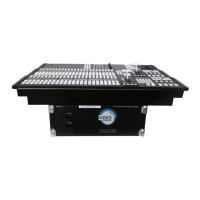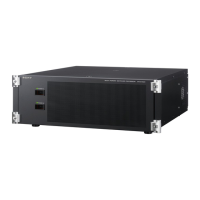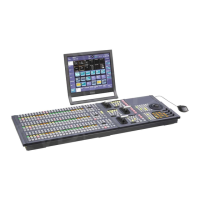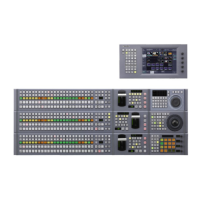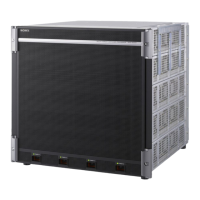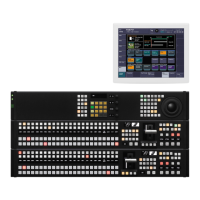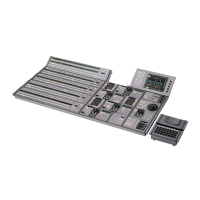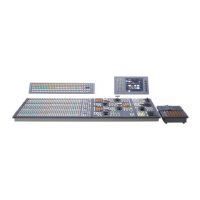The key signal is created from a
combination of the luminance and
chrominance components of the
key source signal. When perfect
keying is not possible with a
luminance key, this allows a key
signal to be created even if the
luminance level is low, provided
that the colors have high
saturation.
A key signal based on a particular
color is used to cut out the
background, and the key fill is
then inserted.
This uses the wipe pattern
selected for an independent key
transition to cut out the
background and insert the key fill.
The background is cut out
according to the luminance (Y) of
the key source signal, and at the
same time the key fill signal is cut
out and then added to the
background signal.
This is a type of luminance key,
but there is a reduced variability in
gain, allowing more precise
adjustment.
Keys
Chapter
4
Overview
A key is an effect in which a part of the background image
is replaced by an image or superimposed text. The signal
determining how the background is cut out is termed “key
source,” and the signal that replaces the cut-out part is
termed “key fill.” The system component responsible for
processing a key is referred to as a “keyer.”
Each switcher bank has four keyers.
Notes
On the MVS-3000 or on the MVS-3000A without an
MKS-6570 installed, KEY1 cannot be used when using a
DME wipe with background selected for the next
transition on the M/E bank. Similarly, DSK1 cannot be
used with DME wipes on the PGM/PST bank. You select
whether to enable KEY1 (DSK1) or DME wipes in the
Setup menu
(
1
p. 346).
Keyers that support resizer/key edge
The resizer and key edge functions can be used by
following keyers.
•
Keys 1 and 2 of the M/E bank
•
DSK1 and DSK2 of the PGM/PST bank
Key Types
The key type indicates the manner in which the key source
signal is used to cut out the background.
Clean mode
In a luminance key, linear key or color vector key, you can
turn clean mode on. When clean mode is on, key fill is
added to the background without cutting out with key
source. This improves the keyed image quality, but means
that the part of the key fill signal which is not to be inserted
must be completely black, or it will color the background.
You set the clean mode with the Type menu of the
respective keyer.
For details,
1
“Setting the key type in a menu” (p. 82).
Note that in the following situations, the clean mode is
turned off, and cannot be turned on.
•
When the key type is a pattern key
•
When key inversion is on
•
When the key fill is a matte
•
When the key edge is an outline
•
When the key edge is normal with soft edge being on
•
When fine key is on
•
When the key positioner is on

